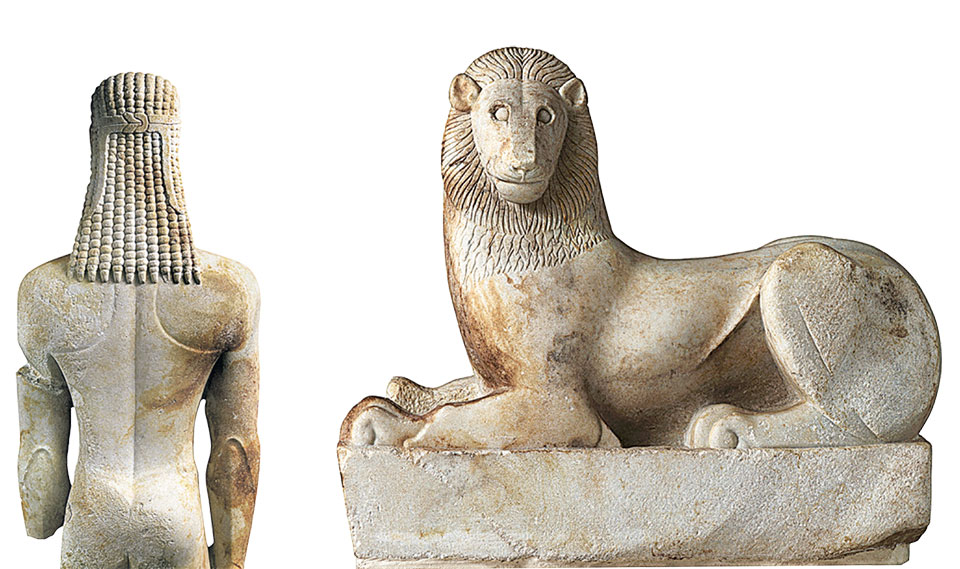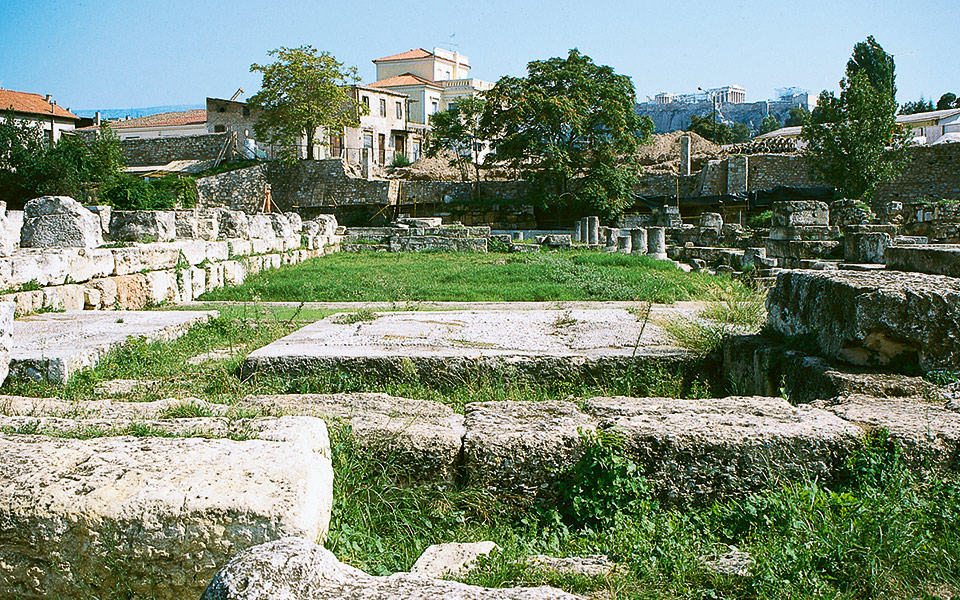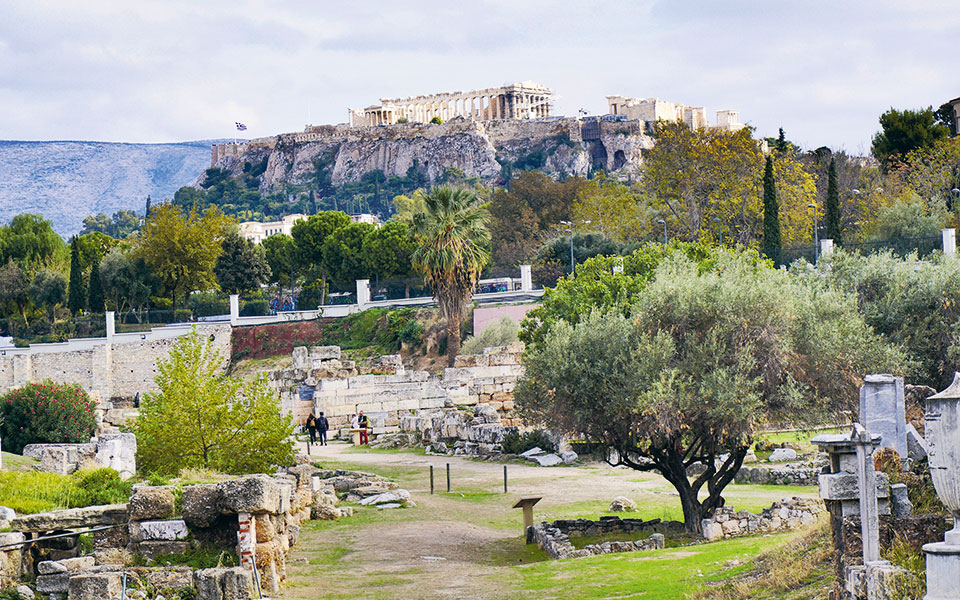The Late Daedalic marble statue of a kouros recovered from the vicinity of the Iera Pyli (the Sacred Gate) was a find that rattled the world of cultural journalism in the spring of 2002, when information leaked out one evening that something great had been found during excavations by the German Archaeological Institute at the archaeological site of Kerameikos. The kouros was impressive. He measured 2.10 meters in height, was well-preserved, and had almond-shaped eyes and a large forehead. He had well-shaped ears and a magnificent hairstyle made of knotted braids. The statue, which is attributed to the Dipylon Sculptor, can be admired today at the museum within the archaeological site of Kerameikos, in the center of Athens. It is a place of great historical significance as well as a green haven that, sadly, very few people know about.
This archaeological site, well worth a visit, is located at the end of busy Ermou Street, close to Pireos Street, and remains open until 20:00 (entrance €8). Here stood the famous cemetery of ancient Athens, and you can stroll among the funerary monuments under the shade of olive, laurel and cypress trees – there are, in total, 180 species of trees and other plants growing on the site. The whole area is a true open-air museum with statues, remnants of large structures and countless tombstones serving as exhibits in a space shared with tortoises and dozens of bird species, and watered by the Eridanos River, which today flows with the strength of a stream under an impressive Roman arch.

The Most Beautiful Suburb
“In the small Athenian valley of Eridanos, in Thucydides’ ‘most beautiful suburb’, was the renowned ancient Deme of Kerameon – known today as Kerameikos,” write archaeologists Eleni Banou and Leonidas K. Bournias, co-authors of the book Kerameikos (John S. Latsis Foundation, Olkos Publishers). “For many generations, people have buried on this land prominent citizens, honored warriors who died in battle, robust young athletes, young female aristocrats and high priestesses – from prehistoric years to late antiquity. They built beautiful burial monuments that preserved memory over oblivion, until those monuments were concealed by the Attic ground and then ‘revived’, thanks to archaeological excavations.” The book is a great alternative for those who are not able to physically visit the site or its museum.
Kerameikos isn’t only the location of the famous ancient cemetery of Athens, it’s also an area linked with the art of ceramics. What’s more, over 9,500 ostraca, or pottery chards used as voting tokens, have been recovered there, giving evidence of Athenian Democracy in the 5th Century BC – during the procedure called “ostracism”, each eligible Athenian voter wrote the name of the politician they considered to be a threat to the city-state on the ostracon, and the person who received the most votes was exiled from Athens for a decade.

It’s quite moving to see the kouros statue up close at Kerameikos – at least for those of us who were around for its discovery in 2002. An impressive sphinx (c. 560 BC) was found in the vicinity of the Iera Pyli, too – it has a kind face, the muscular body of a lion and small wings on its back – as well as two marble lions from the Archaic period and fragments of two marble pillars, one with a large Doric porphyry capital and one with an Ionic capital. They seem to have been used for backfill and landscaping purposes along the banks of the Eridanos River (as it often flooded) and as part of the pavement on the Iera Odos, or Sacred Road – indeed, traces of chariot wheel tracks can be seen on the lion’s body. The findings were “lying in a row”, said the then head of the German Archaeological Institute Wolfgang Niemeier during the announcement of the discoveries, an event overseen by antiquities curator Liana Parlama.
The Hercules Knot on the kouros proves its close link to the statue in the Metropolitan Museum in the US that is known as the New York Kouros. As for the sphinx, its “twin sister”, which came to light in 1907, can be found in Greece’s National Archaeological Museum – it is relevant to note that the Archaeological Society at Athens was the body in charge of excavation at Kerameikos from 1870 to 1913, before the German Archaeological Institute took over.
The most dazzling item in the single-storey museum with the outdoor gallery and indoor atrium is the expressive marble bull statue from the grave enclosure of Dionysios of Kollytos. The death of the bachelor Dionysios caused both his mother and his sisters great sorrow. He lived in the neighboring Deme of Kollytos and the island of Samos as well, where he worked as a treasurer at the Heraion. The column of Igesos, the funerary stele depicting Ampharette with her grandchild, the stele of the bearded boxer, the famous grave relief of Dexileos, and the alabaster perfume vases decorated with amorous scenes depicted on them are also impressive, as is the lead case with the doll inside, an object used to put curses on rivals or enemies.












